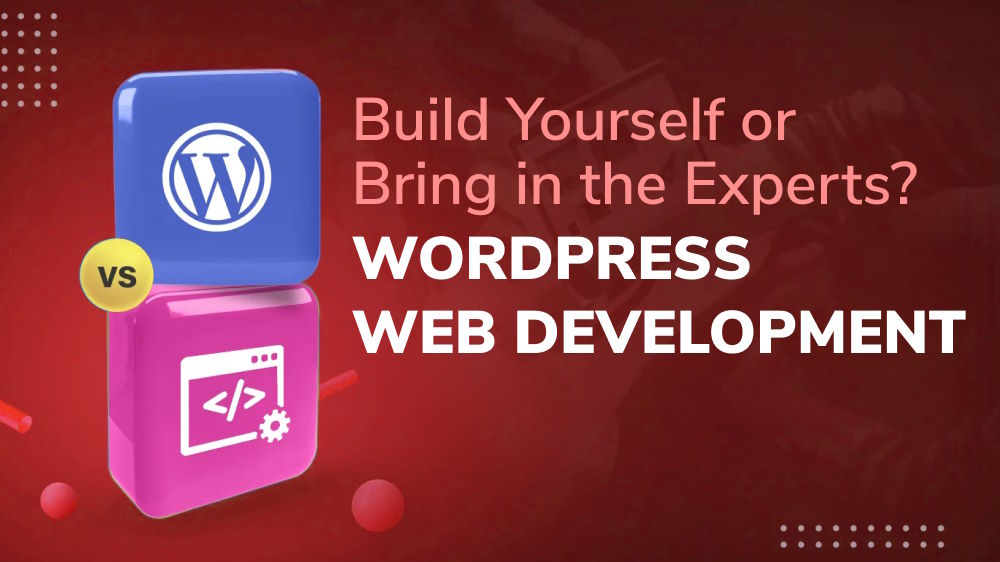
Ecommerce Website Development: Don’t Launch Without These Secrets!
Are you struggling to create an ecommerce website that stands out? Unlock the secrets to skyrocketing sales with our guide to ecommerce website development!
Over the years, the landscape of web application development has altered tremendously as more and more businesses are following one another to go digital. Together with the rise of mobile devices, cloud computing, and other digital innovations, the demand for developing mobile and web apps is climbing rapidly. While most companies with adequate resources and competencies decide to embark on web app development independently, others prefer to outsource their requirements.

There must be some good reasons behind the decision to delegate some parts or the entire web application development process to a software outsourcing company, typically cost-saving benefits, fresh perspectives, and access to multiple sources of web app developers, etc.
Are you considering web app development services? You have come to the right place. In this post, we will show you why outsourcing web application development is a great option and the key benefits you can gain.
By any chance, if you are new to web app stuff, this is a comprehensive guide that you can refer to. In case you are here for web app development outsourcing, you can skip this section and jump into the benefits right after this.

Let’s make it clear. Web applications or web-based apps are simply programs built to run on a web server, which means they are accessible via browsers or other internet-enabled devices. For example, Google Docs – which is a free web-based app to edit and share documents, is hosted on a web server. In other words, it runs “in the cloud.”

Simply put, web application development is the process of creating a web-based type of application. Typically, a web application development process consists of several fundamental stages, ranging from project discovery, ideation, user interface (UI)/user experience (UX) design, coding, and testing to deployment and maintenance. The front-end development of a web application is often built using a programming language or multiple like HTML, CSS, JavaScript, etc., which are supported by most web browsers. On the back-end development, web applications are built using server-side scripting languages (like PHP, Python, or Ruby) and popular frameworks (such as Django, Laravel, and Ruby on Rails).
Usually, mobile apps are built for a specific platform, such as Android or iOS, but web applications are inherently cross-platform. This means they can be accessed from any device, regardless of the operating system, as long as a web browser is installed. So, a web application does not need to be downloaded.
Coming to prominence along with the advent of SaaS (Software as a Service), web apps are created to serve as the backbone of different online services, such as project management, enterprise resource planning (ERP), customer relationship management (CRM), content management systems (CMSs), or eCommerce platforms.

There are two main methods for you to develop web applications:
Custom Web Application Development: Much like custom software development, this approach refers to building a web application from scratch with the app’s functionality and features designed as per your specific project requirements. The development process requires experienced developers, who may be hired in-house or outsourced, with in-depth knowledge of the particular technology stack being used.
Rapid Application Development (RAD): In this method, developers can use an available web application framework or ready-made components to quickly build an application with minimal coding effort. There are many popular web application frameworks available, such as Spring, ASP.NET, Django, and Ruby on Rails. RAD requires fewer resources and time, making it suitable for businesses with tight budgets or limited time frames. However, it offers less flexibility in terms of customization.

There are multiple types of modern web applications that businesses can decide to work on, and each of them serve different purposes as well as vary in the development cycle.

Progressive Web Applications
A progressive web-based app is a web app that combines the best of both worlds – native apps on mobile devices and web-based apps. For example, Spotify or Slack. A PWA can be installed on the device and function like a native mobile app with features such as offline operations, push notifications, background sync, etc., making it easier to load, even if you have no stable internet connection. These PWAs are also optimized for speed and performance, providing a better user experience than traditional web apps.

Dynamic Web Applications
This is a complex web application type. Dynamic web applications are interactive apps designed to enable users to interact with the content, add and edit their data in real-time, store information in a database, and process the input data accordingly without needing any code change or update. These web apps are also optimized for speed and performance, providing a better user experience than traditional web apps.
For example, Netflix, Facebook, or Twitter. Such web apps require more development effort as they use a database-driven architecture and continuous updates to keep up with user input. These apps use a combination of client-side scripting, server-side programming, databases like MySQL, and third-party APIs to dynamically generate user content and data. Additionally, dynamic applications must be secured against malicious attacks like SQL injections and cross-site scripting (XSS).

Static Web Applications
These are the simplest web-based apps. Unlike dynamic apps, static web applications do not change the content based on user input. They are simply a collection of HTML, CSS, and JavaScript to showcase content and information without needing to be processed by server-side programs or databases. For instance, a company’s home page could be considered a static web application. Such apps are easier to create, maintain and deploy than dynamic web applications, but they lack user interaction and the flexibility to generate customized content for each user.
There is a combination of static and dynamic web applications called hybrid apps. These apps provide the best of both worlds – speed, performance from static web applications, and interactivity from dynamic ones.

eCommerce Web Applications
As you can relate to its name, eCommerce web applications refer to online stores and shopping web pages (E.g., Amazon, eBay.) where users can purchase products or services on the internet browser. This type of web page app is designed with an intuitive user interface (UI) using prevalent web app programming languages and multiple functionalities such as product search, shopping cart, payment gateway integration, order tracking, customer management, etc.
Businesses must also build robust eCommerce web applications that are secured against cyber threats to ensure a secure online shopping experience.

Content Manage System Web Applications
Content management system (CMS) web applications are developed specifically to serve the purpose of creating, publishing, editing, and managing different types of content (images, text, gifs, and video) online. These web apps enable businesses or content creators to build and manage a company website without requiring any coding experience.
As CMS apps allow for organizing, deleting, and maintaining web pages within an online platform and modifying content through an admin panel easily as per the user’s convenience, they are widely used for blogs, media streaming sites, and other website development projects.
Popular CMSs used are WordPress, Drupal, Joomla, etc. With the help of plugins and modules available in these systems, users can easily customize their websites to add functionality such as contact forms, eCommerce stores, SEO features, and more.

Single Page Web Applications
Simple as it sounds, a single-page web application (SPA) is a platform where all the data is loaded and handled on one single page only. Think of Google maps and Gmail as examples of SPAs.
The main advantage of single-page applications is that they provide an easier development life cycle, a faster user experience, and smoother navigation for the users. In a small-scale project, these web applications are easy to develop and deploy quickly with no need for complicated backend development. Additionally, it reduces web server load as the content is loaded within a single page.

Multiple-page Web Applications
In the simplest terms, a multiple-page web app (MPA) is a type of software application that contains more than one discrete web page, which is often bound together by links. A user interacts with it by clicking through from one page to the next, and often as an online form. MPAs provide an easy way for users to interact with both applications and websites through their native browser interface. Oftentimes, these types of web-based apps offer improved functionality over single-page web experiences as they feature deeper levels of data processing, automated tasks, and tailored content.
In contrast to SPAs, multiple-page web applications are complex and time-consuming to develop because of the various software components that need to be connected. Hence, this type requires a robust software development process and architectural setup, as each page should be built with all the features running on the backend. However, they are more secure and extendable than SPAs.

Animated Web Applications
Check out Google’s Your Plan, Your Planet for an amazing example of an animated web app. Animated web apps are designed to combine traditional website content with animation to visualize it, delivering a more interactive user experience. Instead of using static pages and content, users can opt for an engaging experience that feels dynamic and fresh. Animation allows developers to break the mold of traditional UI patterns, creating a movement to capture attention, emphasize points, or make a product or service more distinct.

Portal Web Applications
A portal web app acts as a gateway that provides access to different online services, data resources, or content. Portal web apps are often used for search engines, blogs, online shops, etc., allowing audiences to browse relevant resources and data related to their desired topics. These applications are best for businesses to build and customize the interfaces to suit the target audience’s needs. Portal web apps can be integrated with additional tools such as AI-powered search engines, APIs, data analytics, etc., making it a powerful tool for businesses that want to establish an effective online presence.

Rich Internet Web Applications
Rich internet web apps (RIWAs) are an exciting form of software designed to provide a richer and more engaging user experience by introducing an array of dynamic elements for better interactivity, including animations, drag-and-drop functions, voice commands, and much more. Unlike conventional web apps, these applications employ a combination of web technologies, including HTML, JavaScript, and AJAX, to create a UI that has the look and feel of desktop apps.
As the technology of RIWAs advances, this type of app becomes easier for web developers to integrate into their sites. With RIWAs, developers can create data-driven applications that enable users to interact with dynamic content in near real-time, making it possible to access documents remotely, quickly search large databases, or even video conference with others around the world. Most importantly, RIWAs provide a superior user experience by offering fast-loading graphics and immersive animations that make working and playing on the web more enjoyable.
Although web development and web app development are two different areas of software engineering fields, they are usually mixed up for some reasons, typically the similarities between them. Both websites and web apps run in a browser with internet access, and their front-ends and back-ends are developed using the same programming languages and technologies. Nevertheless, none of these things in common make them interchangeable, and neither do their development processes. For those who are planning to build a web app, it is important to tell these two apart. This is how web apps and websites, as well as their development, differ:


Interactivity
At its essence, a website is designed primarily to provide information, while a web application is made to enable users to interact with the content and services it offers. Because of that, web development is focused on creating the basic functionality and a visually appealing and intuitive website, while web app development concentrates more on the functionality aspect of things.

Design
Unlike websites where one page is typically the same for any user who visits it, web apps are designed to provide interactive applications with personalized functions and features for each user. This means that the web app developer needs to design multiple interfaces, input methods (touchscreens and voice controls), and data sources (GPS mapping).
The front end is the most visible part of a website or web application, and it consists of HTML, CSS, and JavaScript code. When building a website, developers must ensure that all content is laid out properly on multiple types of devices with various screen sizes, whereas in web app development, the focus shifts to creating responsive interfaces and animations that help enhance the user experience.
The back end of a website or web application is where the data processing occurs. The fact that websites are used for disseminating information makes their back-ends simpler compared to those of web apps since they don’t require complex algorithms and functions. Web apps need more sophisticated backend technologies such as multiple databases, APIs, and server-side scripting languages like PHP.

Content
Websites are usually made up of static content, meaning that the same page is delivered to all users regardless of their preferences. Web apps, on the other hand, can offer personalized experiences for each user by relying on data collected from them using forms and other interactive features.

Complexity
The development lifecycle of a web application is far more complicated than building a website. This is because web apps require specialized coding, the use of different technologies, and greater testing to make sure it works properly. It involves the design of a user interface and database structure as well as features that can be used for user interaction, such as forms, search functions, and secure payment transactions. Web applications must also comply with certain security protocols to protect sensitive data.

Technology
Websites are typically made with basic technologies like HTML, CSS, and JavaScript, while web apps rely on more complex programming languages and frameworks such as Ruby on Rails, Python, Java, and Node.js. Additionally, web app development often involves the use of third-party libraries or APIs to add functionality to the application.

Security
Websites are less prone to security breaches since they don’t store sensitive user data or process financial transactions. However, web apps often require extra layers of protection due to the sensitive nature of the information they handle. This includes encryption and authentication measures as well as other security protocols in order to protect users’ personal data and prevent unauthorized access. This means the development of web apps requires more effort to ensure their security than web development.
Now that is quite a lot of information which is essential for any company or individual to start a web app development project.
As mentioned earlier, there is a plethora of reasons convincing business owners like you to outsource web app development to top-tier service companies. These are the competitive advantages of using web app development outsourcing services.

The first thing coming to mind when it comes to outsourcing is cost reduction. Web app development outsourcing, in specific, and IT outsourcing, in general, can bring you multiple cost-saving benefits in different aspects. Firstly, you can spend less on developer salaries when hiring offshore developers who can provide the same expertise and experience at a lower cost compared to onsite ones. For example, software developers in Vietnam. Thanks to the disparity in developer salary range in different regions, you will save much on labor costs. Secondly, businesses can also cut down on operational expenditures. There will be no need to hire and manage additional in-house staff or invest in the necessary infrastructure, as you can easily outsource the whole process to an experienced provider. By handing over some courses of financial burdens to an external party, you can keep your budget lean and prioritize your money where needed the most. This is also the primary reason luring most companies and organizations to the decision to outsource their business processes to the hand of an outsourcing company.
Web app development is a specialized technology-focused field, and it asks for an intricate understanding of specific software programming skills, coding languages, and frameworks. This means web app developers must have the necessary technical knowledge and experience to be able to build a high-performance web app, which might be challenging to find and expensive to acquire locally.

Fortunately, this is what outsourcing services can help you with. Most providers boast access to a pool of highly qualified engineers with various specializations ranging from front-end to back-end web development and more. By knowing exactly who does what in your project, you will be able to choose the best people for each task at hand and optimize your workflow more efficiently.
Whether you hire a dedicated team to work on your project or fuel your in-house force with augmented IT staff, outsourcing will give you access to experienced developers who have strong technical backgrounds and know how to build effective solutions for your company’s needs. You can also take advantage of their extensive industry insights as well as their understanding of the latest technology trends surrounding web app application development — something which is not necessarily available with an onsite team. As a result, companies can rest assured that their project is in safe hands as they are assured that their offshore team is seasoned in their line of work.
It is inevitable that businesses usually face a number of fluctuations in terms of workloads and project requirements, which can be challenging to manage with an onsite team. The best thing about outsourcing compared to in-house development is the ability to dynamically adjust and scale your resources according to the demands of your project. You will be able to easily add or remove personnel depending on the current needs, allowing you greater flexibility when managing costs and increasing efficiency in custom web app development services.

This is especially helpful for startups and SMBs that do not know exactly how many resources they need when starting out with a new product or feature. Having access to a more flexible IT staff means that you can quickly customize your assets, allowing you to work faster while also saving time and money spent on idle employees.
Outsourcing web app development services also gives companies a chance to reduce their time-to-market significantly. By removing the challenges of finding and hiring qualified personnel and purchasing necessary IT infrastructure, businesses can make their development process faster without compromising on quality. As you can tap into the required resources in the shortest time, you can get your project roll without waiting. With external support, businesses can not only offload their in-house teams but also save them from the heavy workload and pressure of manpower shortage. This way, organizations can prevent their developers from burnout and avoid high turnover rates. Moreover, you can have the outsourced team work around the clock to ensure that your project meets its timelines.

Outsourcing allows companies to access the latest technology stacks and product development best practices (E.g., DevOps, DevSecOps), leading to higher-quality outputs. With a dedicated offshore team working on your project and providing you with more in-depth QA testing services, your final product will be of better standards. In addition, because these providers usually operate under strict SLAs (service-level agreements), you will be able to hold them accountable for any delays or quality issues that might arise during the development process.
Managing any type of project in-house can be tiresome and daunting sometimes, as you will not have enough time and effort to cater to its every nitty-gritty detail. However, when it comes to outsourcing web app development services, one of the main concerns that companies have is relinquishing control over their projects.

This is a misconception. In contrast to the common outsourcing myths, businesses remain in full control of their projects by having constant communication with the offshore team and regular reports on progress and issues from project managers or representatives of contractors. Furthermore, thanks to improved project management tools and technologies like Jira, Slack, and Basecamp, maintaining transparency between all the stakeholders involved in a project has become much easier than before.
On top of that, you have all the right to negotiate and decide the level of involvement and how you want to manage the development process during an outsourcing agreement. This way, you can remain in control throughout your project and ensure the end result meets your standards and requirements.
There is probably some chance that business owners, as well as their development teams, have to wear multiple hats during the entire SDLC. It may be good because it puts you and your staff under constant training to improve and adapt to new challenges. However, this situation might not be good if it lasts long and will have unfavorable impacts on your project progress and outcomes.

When leaving the non-core activities to the experts, organizations of all sizes will have free hands to work on long-term strategies and optimize business operations. This way, businesses can achieve better ROI from their existing resources while also strengthening their competitive edge in the market.
Security and compliance are among the top concerns of businesses when they consider web app development outsourcing services. Fortunately, most service providers have their own standards in place that ensure all data remains safe and secure throughout the entire engagement. Furthermore, these companies also understand their responsibilities regarding GDPR and other applicable regulations. So, they implement the necessary measures to meet your requirements and keep you compliant with local laws and industry standards.

In addition, outsourcing companies also provide additional layers of security like encryption protocols, authentication procedures, firewall protection systems, etc., which helps you protect data from cyber threats as well. Besides this, many vendors offer maintenance plans to help businesses patch bugs and vulnerabilities in real time for better security performance. This can be useful for young businesses that cannot afford an in-house security team.
Almost every business has to deal with a limited budget and resources. This can further restrict their effort and capability to develop web apps with more complex features, functionalities, and integrations. As a result, they become vulnerable to potential risks such as cost overruns due to faulty programming or time delays by unexpected technical issues. Therefore, any software development project comes with a slight chance of being diverted from the plan, and there are various reasons leading to the project’s failure.

By outsourcing their projects, businesses can mitigate these risks of wasting their internal resources. This is because professional vendors will take full responsibility for the development cycle and any issue related to quality and deadline so that you will not end up making costly blunders. In addition, because of their solid expertise and experience in the field, they are more capable of delivering innovative solutions on time and within your set budget.
As you can see, businesses will miss out on a number of competitive advantages unless they choose to outsource their web app development projects.
Certainly, it is mandatory to have a crystal-clear strategy before opting for outsourced services of any type, and so is the case with web app development outsourcing. The following tips will be useful in your outsourcing journey:


Clarify Your Project Requirements & Expectations Beforehand
It is important to define every aspect of your requirements beforehand to make sure you will get exactly what you want from an outsourced project. Make a list of features and functionalities you need in the web app along with other elements like integrations, UI/UX design, etc. That way, you can easily compare different service providers and pick the right vendor for your specific needs. Communicate your expectations clearly with the vendor so that they understand what kind of outcome they have to deliver at their end.

Choose the Favorable Outsourcing Destination for Your Business
The success of your outsourcing project largely depends on the vendor you pick for it. So, make sure to take your time researching various vendors and find out who best suits your needs. In addition, specific geographical locations offer more advantageous deals than others depending on the type of web app you need to develop as well as your requirements. For example, a lot of tech companies are outsourcing to Vietnam for some privilege of lower labor costs, cost-efficient development services, quality outcomes, or favorable business culture. Meanwhile, others choose onshore or nearshore outsourcing for proximity. Therefore, before getting to your ideal partner, you first have to decide on where to outsource, as there are outsourcing countries available. This step will directly impact your process of finding and choosing your outsourcing company later, so be selective.

Get Your Business the Right Outsourcing Partner
As mentioned, a partner can make or break your entire outsourcing endeavor. So, it is prudent to assess your potential outsourcing partner thoroughly. To choose the right outsourcing company to partner with, businesses will have to take multiple steps and consider many factors, such as the vendor’s experience and portfolio, certifications, pricing structure, technological expertise, level of communication, and more. Undoubtedly, a little research can go a long way in selecting the best outsourcing partner for your business.
Once you have established a list of potential vendors, compare their quotes thoroughly to get an idea of who is offering better services at more affordable rates. Also, check out their portfolio and customer reviews to assess the quality of their work and learn if they can match your expectations or not.

Opt for Flexible Engagement Models & Pricing Structures
Although cost-effectiveness is one of the major advantages of software development outsourcing, businesses should not base their decision on pricing alone. They must choose an appropriate engagement model, such as time & materials (T&M), fixed price, dedicated team model, etc., that best aligns with their project requirements. In addition, they should also ask their vendor to provide a customized pricing structure that best fits their budget.

Be Careful with Low Prices
It is understandable for some companies to prioritize cost reduction and consider factors affecting outsourcing costs accordingly. However, each and every vendor has different levels of experience and expertise, so it is recommended to set a reasonable budget for the project. Low prices often signify inexperience or lack of quality in the end product, which might result in huge losses that could have been avoided if you had chosen to pay a good price upfront.

Set Clear Milestones & Quality Standards
Before starting the development process, it is important to establish clear milestones and quality standards that need to be met. This will ensure that your project is on track and running smoothly throughout its lifecycle. Also, consider having periodic meetings with the vendor’s team and inspecting their progress regularly in order to guarantee the expected quality of the end product.

Monitor Progress & Be Prepared for Emergencies
Don’t forget to check up on your vendor often, as it helps you stay updated with all the changes and developments taking place during various project phases. If any issue arises or unexpected events occur, you should be prepared beforehand by providing proper guidelines and backup plans so that there are no delays in the project.

Check Relevant Data Security Protocols & Regulations
Since data security remains one of the biggest concerns when working with external vendors, it is essential to determine their measures to keep your information secure. Most importantly, make sure they are familiar with and comply with the relevant data security regulations. This is especially important when outsourcing to overseas destinations, as different countries have their own set of rules for protecting data privacy. Get all the details about their data protection policies, such as encryption protocols, authentication processes, etc., in writing before signing any contracts.

In short, outsourcing web app development does offer you a wide range of benefits as long as you do it right and choose the right partner.
Are you ready to seize the opportunity of developing a robust web application with less stress on your budget and internal resources? Come to Orient Software. As the leading company in IT outsourcing services, we have what it takes to conduct your next web app project toward success.
Orient Software is committed to providing the highest level of quality and security when it comes to its services. We guarantee that the web app solutions we deliver are always safe, reliable, and secure. Our team of IT experts has extensive experience in developing applications for various industries like finance, retail, healthcare, education, etc., so you can be sure that your project will be handled with the utmost care from start to finish. Contact us now for further information. Contact us now for further information.
Are you struggling to create an ecommerce website that stands out? Unlock the secrets to skyrocketing sales with our guide to ecommerce website development!
Solution architect responsibilities include analyzing business requirements and evaluating technical experiences, but the role encompasses much more.
Stuck on WordPress vs web development? This guide unravels the pros & cons to help you build your dream website!
Wondering if it’s worth learning how to build a CMS rather than using pre-built platforms? Explore the benefits and steps involved in building your own CMS.
Let's go through some best programming languages for web development to understand them better & decide which one to use for your projects



